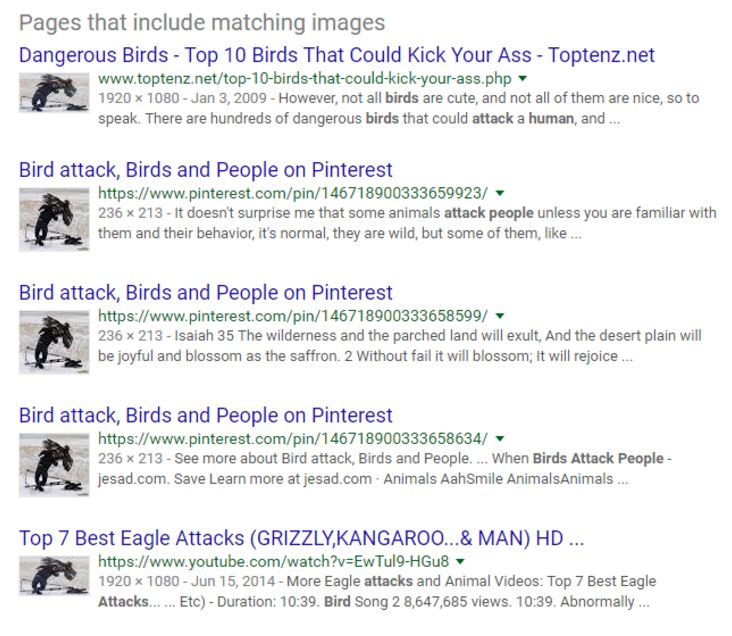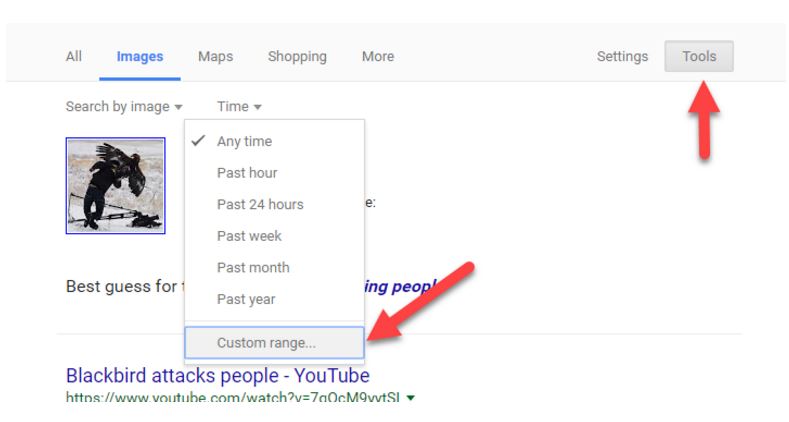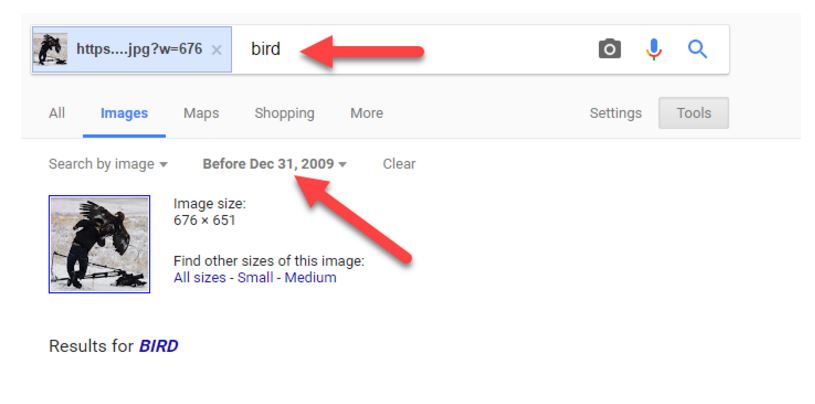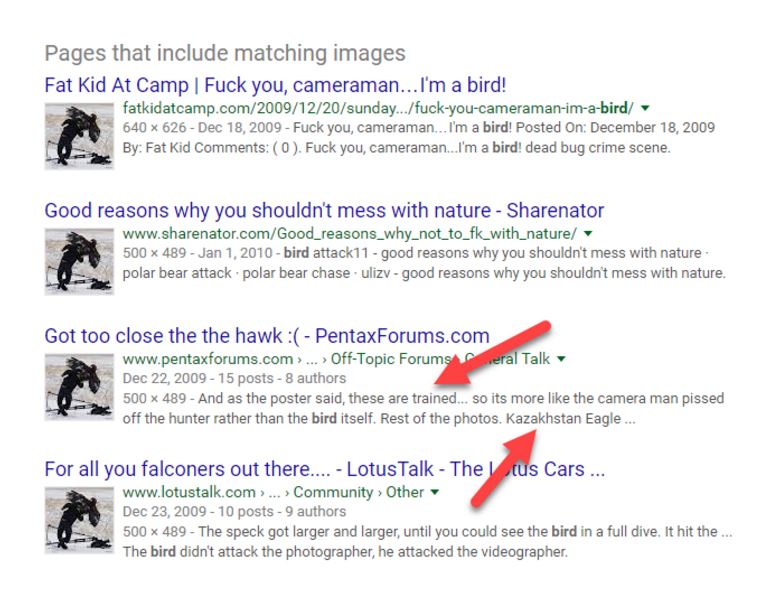14 Filtering by Time and Place to Find the Original
Finding the source of content is often a journey through time and space. The original story is also the first story, and as we saw with the Hawaiian news site, local sources often have special insights into stories.
There are specific functions you can use with Google and other search engines to help you find original material more quickly.
The following is an image that Twitter users have identified as another National Geographic photograph. But is it?

A Google reverse image search finds the photo, suggesting that the best search term is “birds attacking people.”

This suggestion is based on the fact that the pages where this photo appears often contain these words: “birds attacking people.”

We can modify that search, and we will retrieve only the older pictures.
We do that by clicking the “Tools” button and then using the “Time” drop-down to select “Custom range.” This should filter out some of the posts that merely include this in slideshows.

We pick a date in the past to see if we can filter out the newer photos. We remove the “birds attacking people” search and replace it with “bird,” since the other phrase sounds like a title for a slideshow with many of these sorts of photos in it. The original is not likely to be on a page like that; the slideshows come later in the viral cycle:

Why choose the year 2009? For viral photos, 2009 or 2010 is usually a good starting point. If you don’t find any results within that parameter, then go later, to a year like 2012. If you find too many results, then change the search to something like 2007.
Here we get a much better set of results. Instead of a list of “When Birds Attack” slideshows, we get a set of results talking about this specific photo. One of the results stands out.

This third result looks most promising for two reasons:
- The poster of the “Got too close to the hawk” result seems to know a bit more about the situation, noting “these birds are trained.”
- It mentions “Kazakhstan Eagle.” That is a name of a type of bird, but it’s also a place, and if we could confirm this incident took place in Kazakhstan, there will be other ways to trace this back to the original. Remember that our goal is about getting closer in time to the original, but it can also mean getting closer geographically.
When we go to that page, it links us in the comments to a page that has the set of shots that the photographer was taking, as well as a shot of this cameraman being attacked from another angle.

It’s a series of photos from a hunting competition in Chengelsy Gorge, Kazakhstan. The eagle attacking him is tame and trained, but for some reason attacked him anyway. So this is real; it’s not photo-shopped or staged. At the same time it’s not a National Geographic photographer.
While this process takes some time to explain, in practice it can be done in about 90 seconds. Here’s a YouTube video that shows what this looks like in practice.
Note that as long as you are careful with confirmation bias, you can replace the search term “bird” with a term like “fake” to find pages claiming the image is fake and see what evidence they present.

